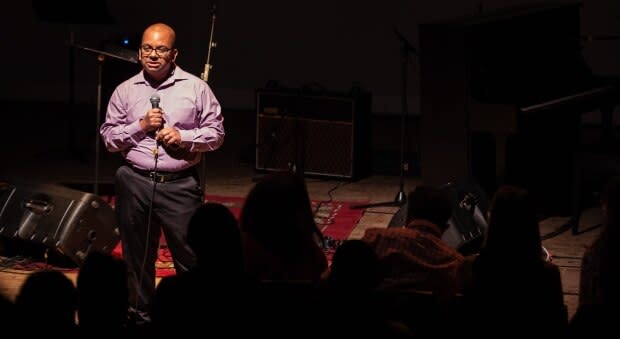Historical solidarity between South Asian and Black communities teaches way forward, says archive director
South Asians have a long history of solidarity with other people of colour in Canada and the United States due to the once restrictive immigration policies and discrimination of the two countries, says the co-founder of the U.S.-based South Asian American Digital Archive (SAADA).
Samip Mallick was the featured speaker of a virtual event held Tuesday by the University of B.C.'s Centre for India and South Asia Research.
His talk, which used stories drawn from the archive, called for unification between South Asian and Black communities in fighting racism across North America.
Mallick draws on the history of H.G. Mudgal, an Indian immigrant who lived in the Harlem neighbourhood of New York City during the 1920s, to illustrate the long lineage of solidarity between South Asian and Black people.

"In many ways, H.G. Mudgal's story is a parallel for what our community is trying to address today, which is both acting and being in solidarity with Black communities, but also addressing the issues within our own community that prevent us from moving forward," he told Stephen Quinn, host of The Early Edition.
"What was interesting about H.G. Mudgal is not only his involvement with Black struggles, but also the work that he had to do within the South Asian American community to combat casteism and anti-Black racism."
Mallick said both Canadian and U.S. governments once had stringent immigration policies in place to discourage South Asians from crossing their borders.

South Asian immigration thanks to civil movement
Speaking specifically about the U.S., Mallick said more South Asians were allowed to immigrate to the country under the Immigration and Nationality Act of 1965 thanks to their close connections with the Black community.
"It was only in the midst of the civil rights movement led by Black Americans in 1965 that those from South Asia like my family and many of the South Asian American community members that we see today were allowed to come to the United States," he said.
Mallick said the history of xenophobia against South Asians in B.C. is shared south of the border, including the Bellingham, Washington riots in 1907 where Punjab lumber mill labourers were attacked by a mob of white men.
"That touched off other kinds of anti-immigrant violence in California, as well as in British Columbia. Those early histories are very much linked," he said.
The B.C. and federal governments and the City of Vancouver have offered apologies for Canada's decision in 1914 to turn away the Komagata Maru, carrying hundreds of South Asian immigrants.
Click the following link to listen to Samip Mallick's interview on The Early Edition:

